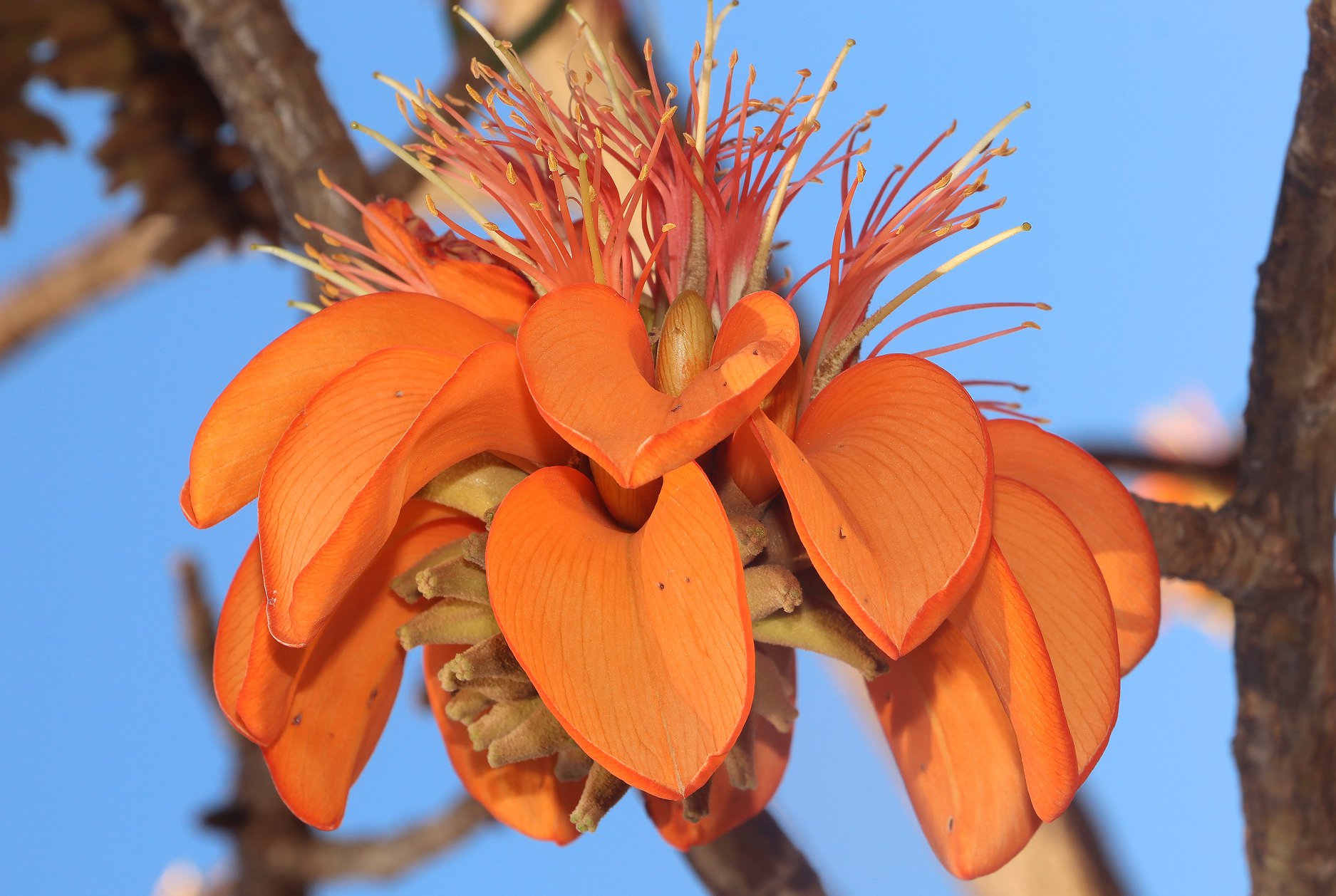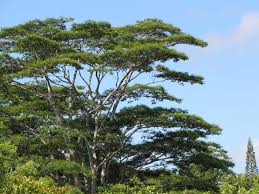Nitrogen (N) is essential for plant growth, as everyone knows. Nitrogen-fixing plants, with help from bacteria in their root nodules, capture convert, store, and release it.
Native Ecosystem
It seems counter-intuitive that native plants don’t always do well in nitrogen-rich areas. Still, it was the ability to thrive in nutrient-poor soils that gave ancestral plants the advantage in colonizing the Hawaiian islands. Those hardy species made a journey of more than 2,400 miles, coming by way of wind, waves, or birds, and their offspring became the 1,400 plant species native to Hawaii. Native plants developed the ability to pioneer a bare lava flow, turning the bare rock into a forest over a long period, an awe-inspiring feat.
This presents a unique problem in Hawaii: added nitrogen in the soil isn’t always a good thing, at least where native forests are concerned! N-fixing plants make most of their fertilizer, pump it into the ecosystem, and change the plant communities’ nutrient cycle. This can shift the native plants’ advantage, adapted to the harsh Hawaiian substrates, to invasive species that now have more nutrients available. It’s like sending out invitations and not inviting the native species: the slow-growing and non-aggressive native forest trees are unlikely to penetrate this new alien system. They are not welcome to the party!
Surplus Nitrogen facilitates invasive plants
While some added nitrogen is desirable for some plants, keep in mind that large nitrogen inputs can cause a lot of unwanted plant growth. Besides the problem of weed invasion, surplus nitrogen in the system has other negative consequences for the home gardener. Initially, with added nitrogen, plants will shoot up and produce lush foliage. However, these new leaves are more likely to be attacked by pests and disease. Furthermore, the extra canopy can create a more humid microclimate, aiding the growth of even more pests and diseases. Fruit production declines or is nonexistent with too much nitrogen; beans or other Fabaceae family members will not produce pods. And while new growth is noticeable, what’s occurring below ground is less apparent. Excess nitrogen stunts roots, putting the structural integrity of the plant off balance. Top-heavy plants with stunted roots are likely to fall over, a dangerous situation with towering trees.
Nitrogen-fixing plants are thought of as “short-lived” pioneer species, but there is rarely a plant short-lived in Hawaii. Growing many feet a year and producing their fertilizer, a nitrogen-fixing tree can quickly get out of hand. Our most famous example is the notorious invasive albizia (Falcataria moluccana); it’s hard not to notice when a tree can grow 15 feet in a year! A freshly bulldozed field can grow into a thick albizia forest in just a year or two when not maintained. Before long, albizia can reach heights of 100’ or more, becoming hazard trees that are costly to cut down and dangerous to leave standing, due to their weak form. Adding nitrogen is easy, but eliminating the excess can be a bit difficult. The removal of nitrogen-fixing invasive species comes with high cost, hard work, and sometimes legal hurdles.
Essential Nitrogen
Of course, nitrogen is essential for the growth of many of our crops and food species, but care is needed to avoid exacerbating an ecosystem-scale problem. Permaculture and other natural farming practices promote heavy use of nitrogen-fixing plants. Creating food for humans without outside inputs is a great goal, but short-sighted if there are no considerations on native biodiversity impacts. A recent permaculture class in Hawaii praised the virtues of the Kudzu vine (Pueraria montana) – a high-risk invasive vine that grows a foot a day! While it indeed fixes nitrogen into the soil, it can be impossible to control. Kudzu is so invasive in the Southern United States that it is called “the vine that ate the South.” What good is nitrogen-rich soil when vines are covering the crops you intend to harvest?
Sustainable food production includes care for the greater ecosystem as well as growing hearty food crops. It can be a delicate balance to maintain in Hawaii, where the very nature of nitrogen-fixing plants lends them to high invasiveness! The Hawaii Pacific Weed Risk Assessment tool, available at plantpono.org, provides gardeners and landscapers with information about a species’ historical and biological characteristics along with their ability to fix nitrogen. There are N-fixing plants that are easy to control, that won’t escape cultivation and can provide nutrients to the soil without escaping to harm the native species we depend on for essential ecosystem services.
Pono Nitrogen Fixers
Native nitrogen fixers
Native plants such as Acacia koa, Acacia koai, Erythrina sandwicensis, Vigna spp, Sophora chrysophylla, Sesbania spp, Canavalia spp, Mucuna gigantean, Senna gaudichaudii, and Strongylodon ruber will all fix nitrogen. In Hawaii, these plants are not invasive even if they escape cultivation and dominate an area. By definition, an invasive plant is “not native to the area under consideration and whose introduction causes or is likely to cause economic or environmental harm or harm to human health.” When these species colonize natural areas on their own, it is a welcome benefit!
Non-native nitrogen fixers
Other good choices for nitrogen-fixation include some non-native plants that are unlikely to be invasive: ear tree (Enterolobium cyclocarpum), coral tree (Erythrina variegata), pigeon pea (Cajanus cajan), lablab bean (Dolichos lablab), partridge pea (Chamaecrista nictitans), scarlet jade vine (Mucuna bennettii), clay wattle (Acacia glaucoptera), and perennial peanut (Acacia glaucoptera). Besides emitting nitrogen into the soil, these plants offer many other uses including living mulch (chop and drop), animal fodder, erosion control, human food, living fences, bee forage, shade for humans, protection for other young trees (like cocoa trees), windbreaks and many more.
From seaweed to majestic trees, nitrogen-fixing plants come in all shapes, sizes, and forms.
Choosing a pono plant will make your life easier: no one wants to deal with a landscaping nightmare. It’s imperative to have the ability to control your nitrogen-fixing plants. Too much nitrogen can damage the ecosystem, cultivate more pests and disease, and lead to declining food production. For a truly sustainable approach to growing, choose plants that won’t harm our environment. Find the right non-invasive nitrogen-fixing plant for you at www.plantpono.org! 
Note: Scientific names were used exclusively for the native N- fixers due to the variation and multiple Hawaiian names given to each species.
Molly Murphy is the Plant Pono specialist for the Big Island Invasive Species Committee. mollym3@hawaii.edu








